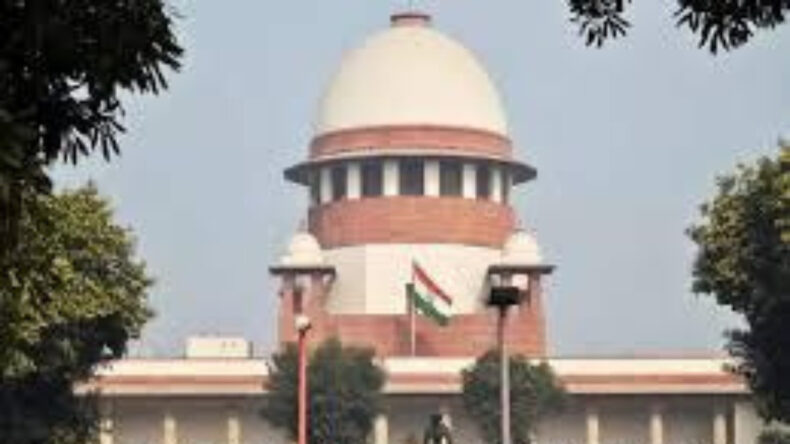In a significant development that has ignited a fresh debate on press freedom in India, the Supreme Court recently stepped in to protect three journalists from possible arrest by the Manipur Police. The journalists, Seema Guha, Bharat Bhushan, and Sanjay Kapoor, along with Seema Mustafa, the president of the Editors Guild of India, found themselves in legal jeopardy due to their involvement in publishing a fact-finding report on the communal clashes in Manipur.
On a Wednesday that will be remembered in the annals of Indian journalism, senior advocate Shayam Diwan brought this pressing issue to the forefront of the Supreme Court’s attention. Diwan revealed that two FIRs had been registered against the three journalists who had formed a fact-finding team and prepared a report on the Manipur communal clashes, which was subsequently published on September 2.
The filing of these FIRs had a chilling effect on press freedom in India. Diwan argued convincingly that these FIRs were nothing short of intimidation tactics, leaving the journalists with the looming threat of arrest by the Manipur Police. The journalists urgently needed protection against such an alarming prospect.
Adding to the complexity of the situation, Manipur Chief Minister N Biren Singh had publicly accused the Editors Guild of India of “promoting enmity” through their fact-finding report. Singh’s allegations, aired during a press conference, only exacerbated the concerns surrounding the safety and freedom of these journalists. It became increasingly clear that their work had touched a nerve in the corridors of power.
The response of the Supreme Court to these grave concerns was swift and decisive. A bench headed by Chief Justice of India Dr. DY Chandrachud declared that the three journalists would be safeguarded against any coercive action until Monday, with a follow-up hearing scheduled for September 11. This interim protection represents a crucial step in shielding journalists from the fear of retribution for their work.
The Editors Guild of India’s involvement in this matter stemmed from a series of representations, including one from the Indian Army, regarding the alleged bias and inaccuracy in the reporting of the Manipur communal clashes by both local and national media outlets. These representations painted a bleak picture of the media’s role in exacerbating violence in the state through incorrect reporting, misinformation, and the spread of fake news.
In response to these concerns, the Editors Guild of India established a fact-finding team comprised of three seasoned journalists. This team embarked on a journey to Manipur to engage with various stakeholders, investigate the ground realities, and ultimately prepare a comprehensive report. The report was then published on September 2, triggering the legal woes that the journalists currently face.
The case of these journalists in Manipur underscores the broader challenges faced by journalists in India today. Press freedom is a cornerstone of any democratic society, allowing journalists to report facts, uncover truth, and hold those in power accountable. However, the increasing incidents of FIRs, legal threats, and harassment against journalists raise serious questions about the state of press freedom in the world’s largest democracy.
Journalism plays an essential role in any democratic society by acting as a watchdog, ensuring transparency, and keeping the public informed. When journalists are stifled or intimidated, it not only infringes upon their rights but also deprives the public of vital information. This case in Manipur reminds us that press freedom is a fragile treasure that must be defended vigorously.
It is vital to recognize that journalists, like all citizens, are entitled to the protection of their fundamental rights, including freedom of speech and expression. While journalism is often seen as the Fourth Estate, serving as a check on the government’s power, it should not be subject to unwarranted harassment or threats.
The legal battle unfolding in the Supreme Court is a litmus test for the robustness of India’s democracy. It will determine whether journalists can operate without fear of retribution and continue to fulfill their vital role in society. The court’s decision on September 11 will send a powerful message about the state’s commitment to protecting press freedom.
In conclusion, the FIRs against journalists in Manipur are a troubling development that has raised concerns about press freedom in India. The Editors Guild of India’s fact-finding report aimed to shed light on the communal clashes in Manipur, but it inadvertently exposed the vulnerabilities faced by journalists in their pursuit of truth. As the Supreme Court deliberates on this case, it must send a clear message that press freedom is non-negotiable in a thriving democracy like India. The world will be watching, and the outcome will have far-reaching implications for the future of journalism in the country. In the face of these challenges to press freedom, it is essential for civil society, media organizations, and citizens to rally in support of these journalists and the broader cause of a free and vibrant press. The outcome of this case will not only affect the fate of the journalists involved but will also set a precedent for how India values and safeguards its democratic principles, including the freedom of the press. The defense of press freedom should be a collective endeavor, ensuring that journalists can continue to serve as the voice of the people and a crucial pillar of democracy.












